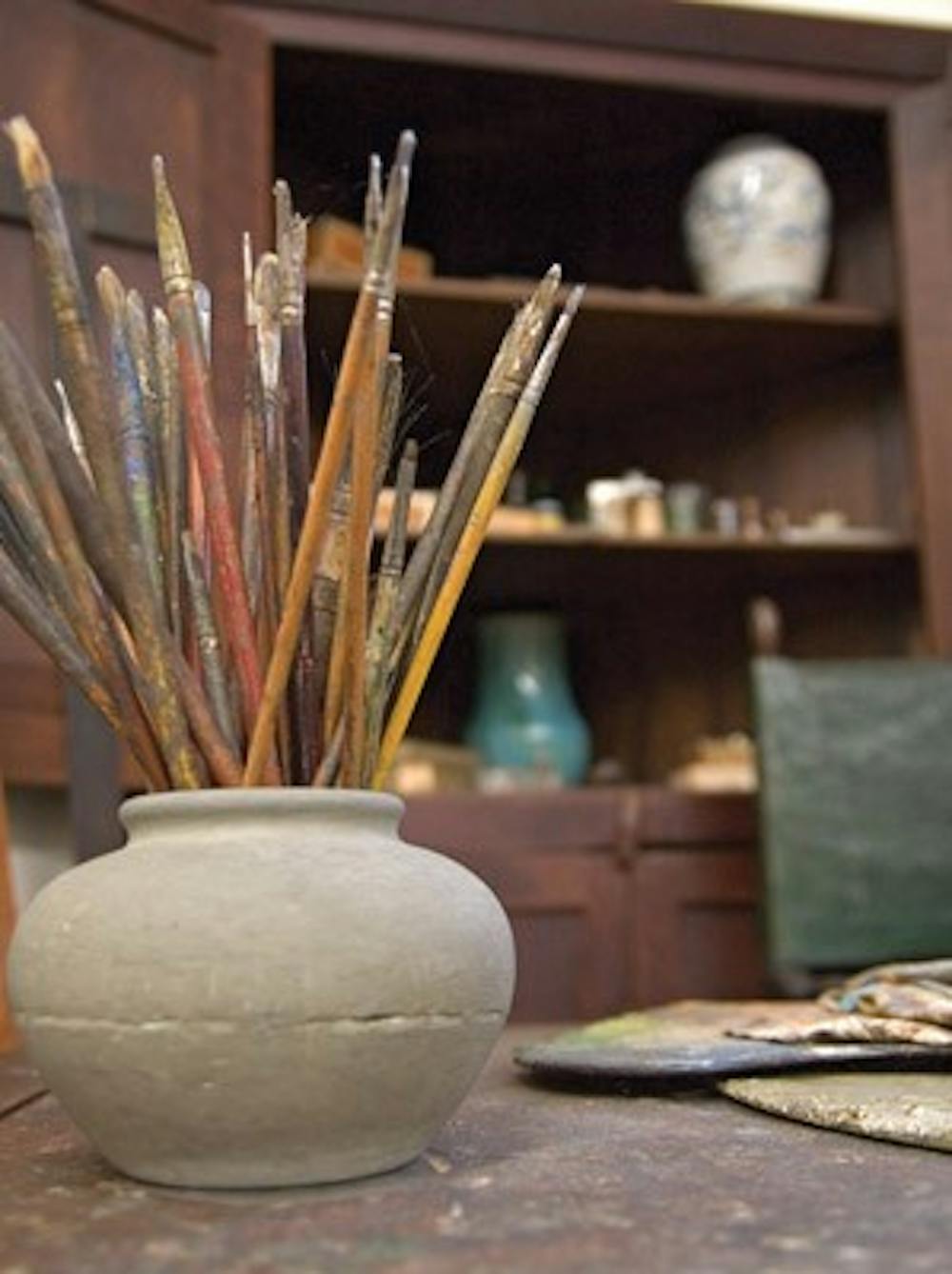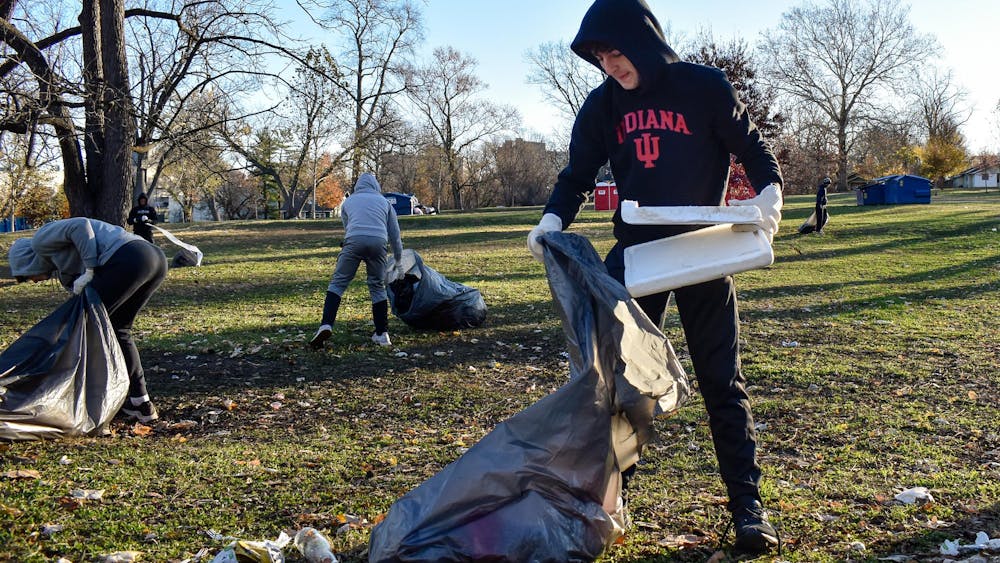The leaves had not even begun to change color when IU President William Lowe Bryan proposed to University trustees in June 1922 that his longtime friend, the lauded painter Theodore Clement Steele, be offered a position at the University. Steele was Indiana’s preeminent artist.\nWhen the aging painter arrived in Bloomington, few would have guessed the young town was destined to become one of Indiana’s artistic hotbeds. Of course there was theater and music, but Bloomington was a place still lacking an artist’s scene, said Sherry Rouse, IU curator of campus art. Unlike today, where art galleries continue to speck the cityscape, pre-Steele Bloomington was a different place – one that was destined to change.\nThis October marks 100 years since a friendship between the beloved Hoosier artist and a forward-thinking IU president began. The century that has passed witnessed a University’s maturing. From a small religious-focused school to a modern institution embracing the arts, that friendship built the framework for what the University was about to become. In fact, today more Bloomington-area artists receive state grants than the artists in population-centered Indianapolis, said Bobbie Garver of the Indiana Arts Commission.
Employers and friends\nMiddle-aged with sharp features, Bryan became a staple at IU even before he took the reigns as president. From age 25, he served as a philosophy professor and later as the University’s vice president. In a subsequent role, he mentored once-student and future University President Herman B Wells. A massive growth in University arts occurred during Wells’ tenure, likely a result of Bryan’s grooming. \nBryan was a “man of the world,” and completely “ahead of his time,” Rouse said. He loved the arts in a city without a scene, she added. \nSteele would eventually provide the inspiration for that scene. Though he was recognized as one of Germany’s top art students after studying there as a young man, he returned to his home state, leaving behind a thriving European art culture to paint the ruggedness of Hoosier life.\nSteele and Bryan first became friends in 1907 when the University president hired Steele to paint a portrait. It was a time of change in the artist’s life. He had just married his second wife, Selma, and purchased a 211-acre plot in Belmont, Ind. – only about 20 miles from Bloomington. The property, named “House of the Singing Winds,” remains today a serene place, set amongst the rolling hills that have made Brown County a sacred retreat for weekenders and autumn tourists. Adjacent to the modest home, Steele’s high-ceilinged studio houses dozens of his most precious paintings. \n In 1907 Bloomington was still a relatively new place – only having been settled a century earlier. And although rugged Hoosier landscapes eventually won Steele fame, portraits primarily sustained him financially, Rouse said. He loathed that work, she said, but painting portraits paid the bills. \n“He was a landscape artist above and beyond,” she said.\nLeaders demanded Steele’s portraits. He painted poets and legislators, academics and businessman attaining increased regard for his work statewide. Bryan was only one in a laundry list of dignitaries Steele had painted. But even beyond letters from the era that display the two’s mutual geniality, subtleties such as Bryan’s facial expressions in the painting indicate the two maintained a close relationship, Rouse said.\nThat friendship later paved the artist’s path to Bloomington.\nYears later, a job alongside Bryan at IU awaited Steele. After expressing some hesitation, the artist accepted Bryan’s offer and the lucrative $2,500 salary to become the University’s first resident artist, Rouse said. The painters arrival at IU was a sign of changing tides, she added – signaling the University’s upsurge from seminary-based education to a program that encompassed art as part of a growing research institution. \nToday, both IU’s and Bloomington’s art scene thrives. While the IU Art Museum houses work from all over the world – including some of Steele’s most prized paintings such as “The Boatman” – efforts across the city have helped to secure Bloomington’s reputation.
An artist’s presence\nThough the acclaimed artist was initially hesitant to accept the position, Bryan worked to appease his friend. He wrote to Steele expressing he would have no official duties at the University while serving as an artist-in-residence. At age 75, Steele didn’t lecture or teach classes. He simply painted from his studio in the library’s attic – now Franklin Hall. \n“Your service would be what you choose to make it,” Bryan wrote in a letter to Steele dated June 1922. “We should by no means wish to interfere in the least with your continuing your work as a creative artist.” \nYet students were often invited into the secluded studio to learn from a man who had already attained national regard, according to documents from the IU archives. Initially, students treated the artist’s presence on campus as a novelty. Most had grown up on farms, largely unexposed to the day’s modern art. The University printed an art appreciation guide for the students intending to view Steele’s work, informing them they would unlikely appreciate the complexity of Steele’s paintings.\nAnd indeed he painted. The old man with the white beard and wrinkling skin created dozens of works while in Bloomington, many depicting familiar University landmarks. So often, students wanting to speak with the artist could find him in the yard outside present-day Franklin Hall. He was devoted to his work and when winter’s snow chased him indoors, “he could be seen from his window, painting the campus that so many have grown to love,” according to a July 1926 edition of The Indiana Alumnus magazine.\nUntil his death, many students and faculty members loved Steele’s presence at IU. The summer of 1926 brought mourning to a campus, which before his presence enjoyed little of his impressionist style. Bryan cancelled 3 p.m. summer classes July 27, 1926 to honor his late friend. Those words and gestures were echoed throughout the University. \n“No man was paid greater homage by the student body,” said former IU trustee James W. Fesler, according to the University’s alumni magazine. \nAnd through that homage, the arts at IU developed. Resident artists followed Steele, but none as prominent, Rouse said. There was something about his intensity, his drive that set him apart – that made him the greatest Hoosier painter of an era, if not ever. \nMost simply, “the guy was possessed,” Rouse says. “He had to paint.”






